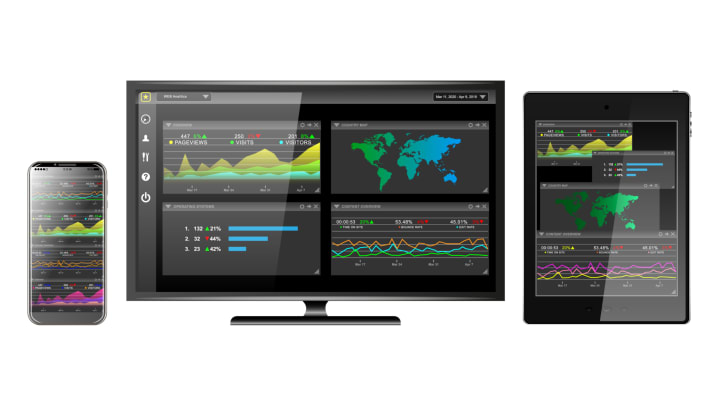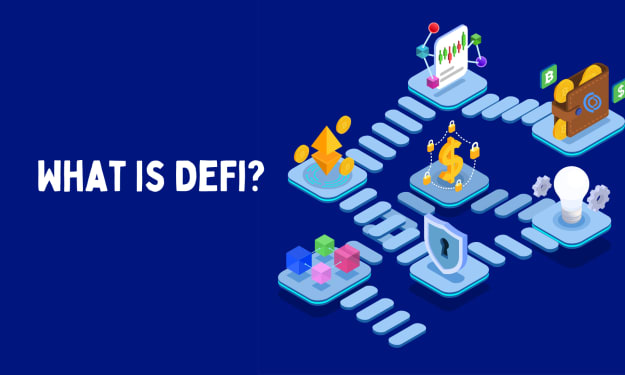
Digital currency is regaining popularity and even winning government recognition in different economies. Regardless of Bitcoin's end-of-the-year exchange rate, it is already clear that cryptocurrencies and blockchain technology will follow us into the future.
Direct investment in crypto assets aside, is there another way to make money in this field? Yes, there is: to launch a trading platform, a cryptocurrency exchange, for instance. And that’s where anyone willing to invest in this type of business will sooner or later face the need for a technological solution to provide trading processes.
There are two possible solutions to this problem — developing a crypto exchange from scratch, or purchasing a white-label product. In this article, we'll break down both options and study their pros and cons to help you make an informed decision.
Building it from scratch: How do you make sure your exchange is up and running?
Software solutions form the technological basis of any digital trading business. You will need to build a set of components that must interact with each other seamlessly to ensure the successful operation of your exchange. We'll briefly describe the role of each component to give you an overview of the range of tasks your devs will have to deal with.
Matching engine
The matching engine is the backbone of any crypto exchange. Its main function is to match and execute buy and sell orders. The engine algorithm keeps track of all open orders and executes a trade if two opposite orders can be matched.
The matching engine is an incredibly complex software component required to synchronize the state of dozens or even hundreds of trading pairs simultaneously and to process orders within milliseconds. Its development and proper quality control are extremely resource-intensive tasks that only highly experienced teams should be entrusted with.
Trading platform

Trading platform allow exchange clients to place orders and manage their trading accounts. The usability of your entire exchange will depend on the development quality of this component.
Also, the trading platform should be responsive and incorporate features such as wallet balance calculations, crypto-asset transactions, purchase transaction management, and access to the book of orders. Developing trading platforms that successfully combine the above functionality can take years, even with an experienced team and sufficient resources.
Liquidity generation
Liquidity is important for all trading assets, including cryptocurrencies. Liquidity refers to the ability of a coin to be converted into fiat or other cryptocurrencies. To ensure high-quality liquidity, your exchange needs a liquidity aggregation module.
The liquidity aggregation module is designed to gather liquidity flows from external providers and internal market-making algorithms. For a successful exchange launch, it is important that you have both the software component at your disposal and connections with major liquidity providers.
Wallets
Crypto wallets on a cryptocurrency exchange are needed to store and withdraw cryptocurrencies, while fiat gateways serve for depositing and withdrawing fiat money, such as USD, EUR, CAD, etc. You also need to make sure that your exchange maintains stable relationships with banks.
An equally important aspect is wallet security. Any crypto exchange that expects to gain customer trust must have all possible security procedures implemented. A single incident of hacking can lead to irreparable reputational losses.
Trader's room
Trader's room is where your users will manage their cash flow and complete verification and registration procedures. The main challenge in developing a user-friendly and fully functional trader's cabinet is that it must include the maximum number of popular payment systems, financial reporting tools, and data analytics.
Admin panel
Through the admin panel, a crypto exchange supervisor or CEO monitors all the processes that take place on their exchange platform, including transactions on any wallet in each user account.
An admin panel should also include KYC / AML modules, as well as reporting & analytic tools necessary to comply with all legal requirements of your regulatory domain.
Pros and cons of the approach
Surely you have already been able to draw some conclusions yourself based on the above description. The obvious advantage of developing software from scratch is the possibility to customize each component as your business needs it, putting all your requirements directly into the source code.
However, the main disadvantage of this model is that it takes at least a year from the start of development to launch. You also have to recruit an experienced development team and be prepared to invest six-figure sums in R&D.
Purchasing a white-label solution
A white-label crypto exchange solution is a turnkey software package that integrates all of the features described above. When ordering a white-label solution from a reliable vendor, a business owner can be fully confident in the technical foundation of their trading platform. The only part that needs rebranding for launch is the front-end.
Pros and cons of the approach
The key advantages of using white-label software can be distinguished as follows.
- Confidence. The white-label solution you have ordered has most likely already been tested in the marketplace. This means guaranteed smooth running and timely support.
- Saving costs. Even a feature-rich solution with outsourced related services is significantly more cost-effective than developing full-featured functionality from scratch.
- Lower time to market. Some solutions allow you to launch a crypto exchange in just a few weeks’ time. The faster you launch, the more strategies you can test and the sooner you can start generating revenue.
The main disadvantage that can be highlighted in this model would be not having the source code ownership. You may also add that a white-label solution in its most basic state has much less flexibility than a proprietary one. However, please should keep in mind that many experienced turnkey solution developers provide the option of deep optimization of exchange functionality. It can be seen as a kind of compromise between resource optimization and the desire to customize the solution for every possible need.
Comparing both solutions side-by-side
This table presents a comparison of the key indicators that determine the advantages and disadvantages of both approaches we have studied just now.

Final thoughts
Regardless of the approach you choose, make sure you're working with reliable technology and related services providers. The market today is oversaturated with trading products, and only the businesses that offer ultra-secure platforms with advanced functionality have a chance to succeed.
Soft-FX has more than ten years of experience in developing digital trading software, with our products constantly tested by our clients in the “combat zone”. In just two weeks, we will submit our off-the-shelf solution, and then work with you to promptly adjust our product to your unique business needs.
About the Creator
Soft-FX
Soft-FX is a fintech development company that provides software and support services to both the financial services industry and crypto exchanges.






Comments
There are no comments for this story
Be the first to respond and start the conversation.